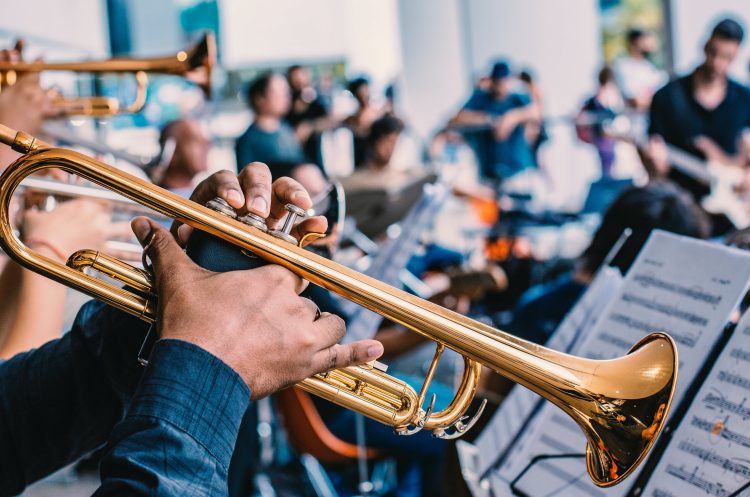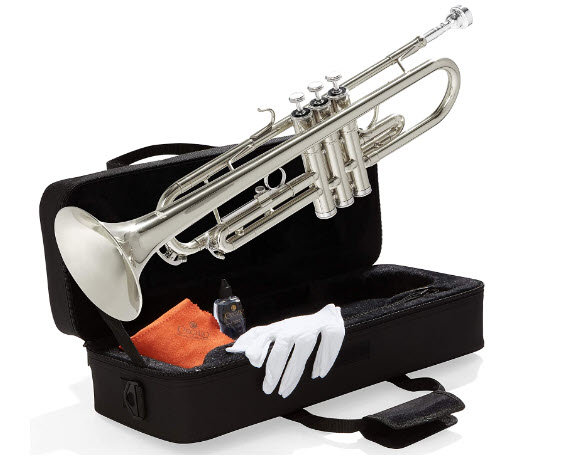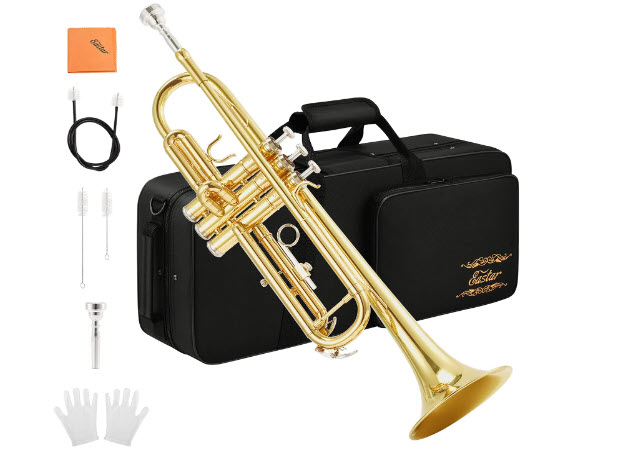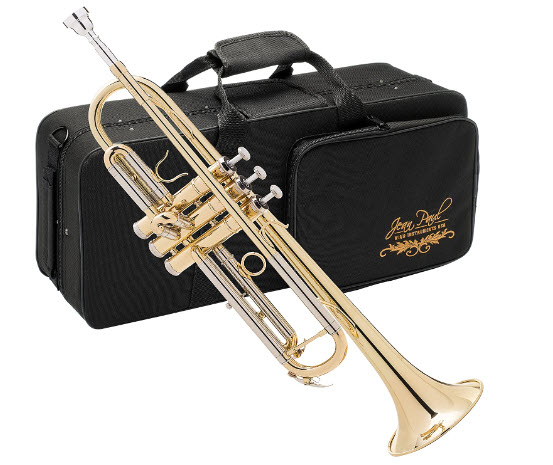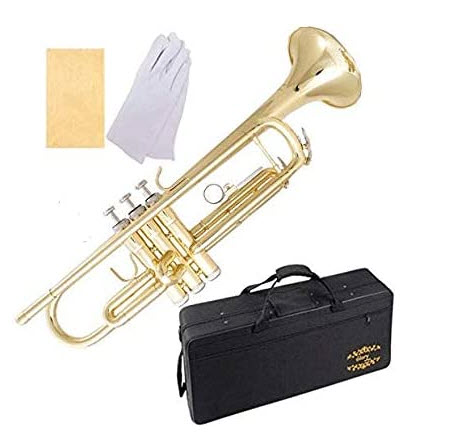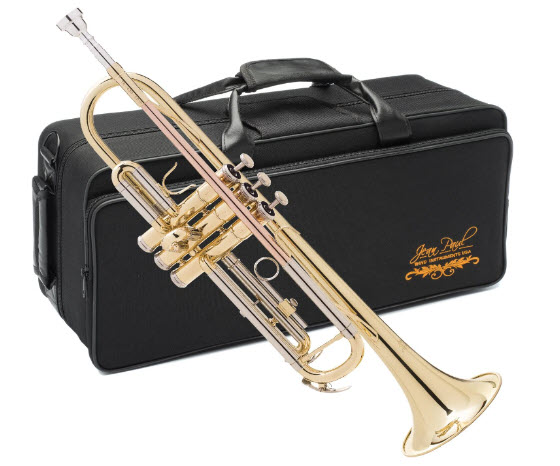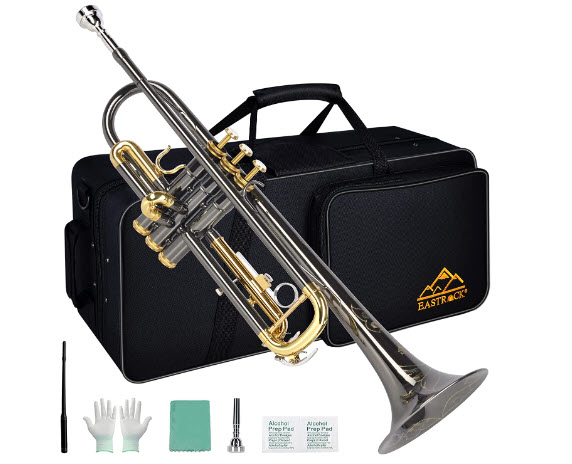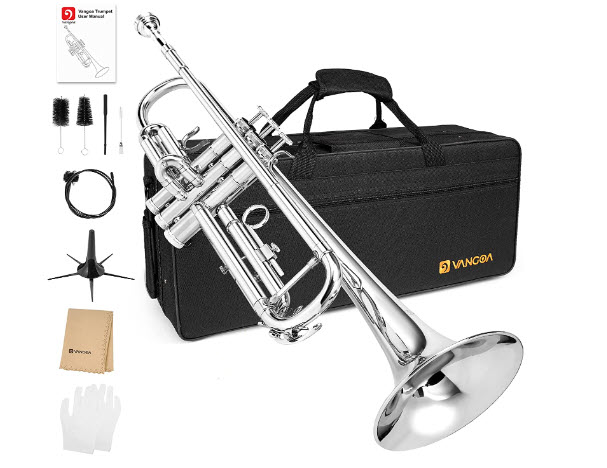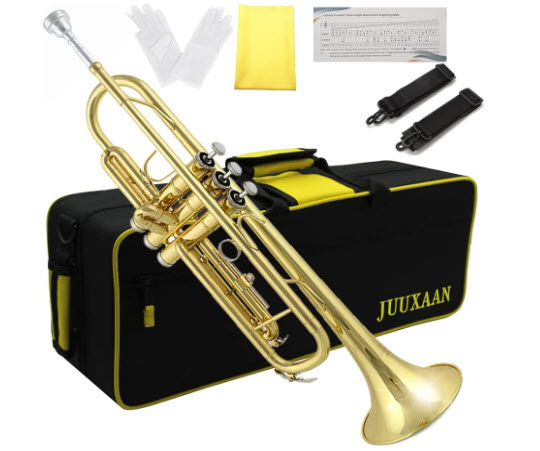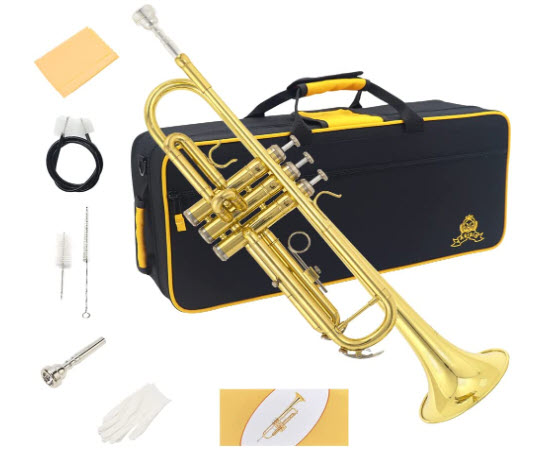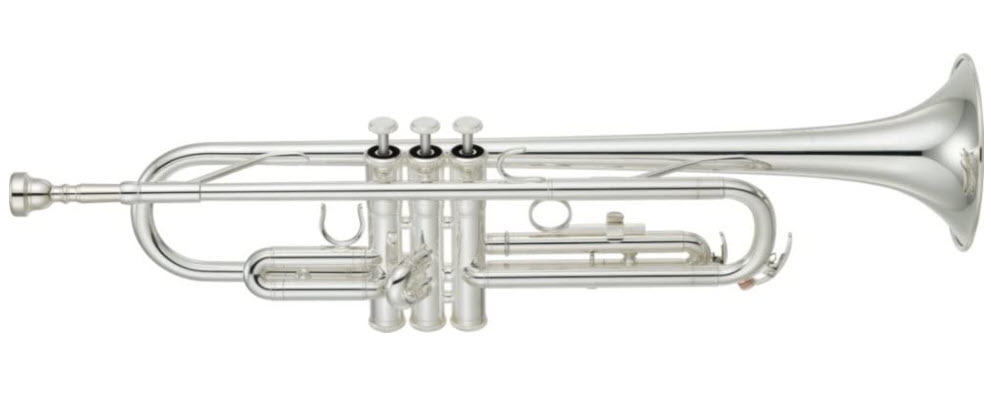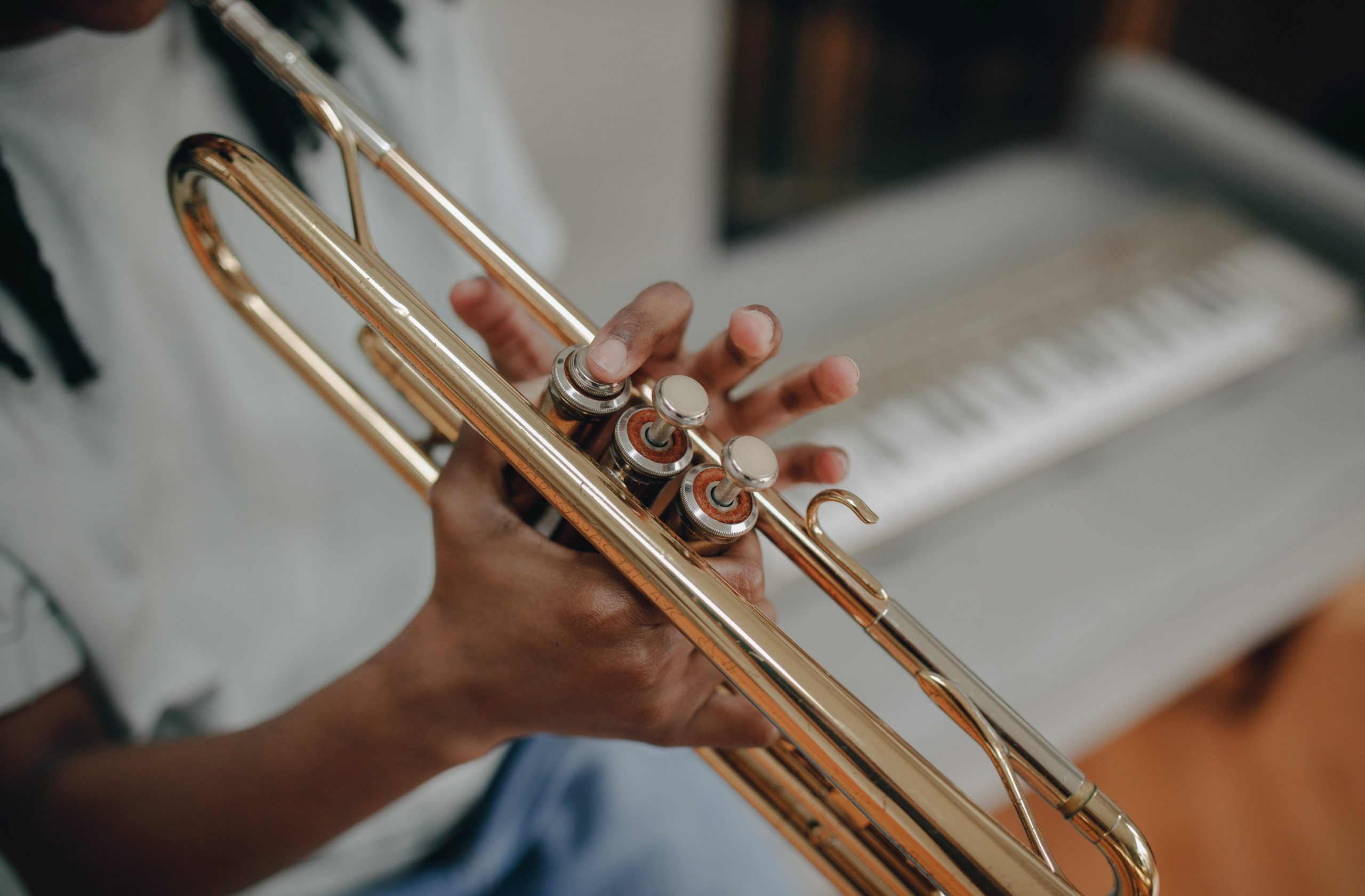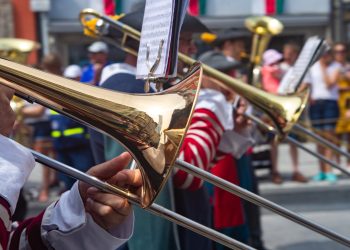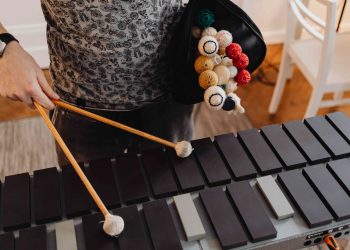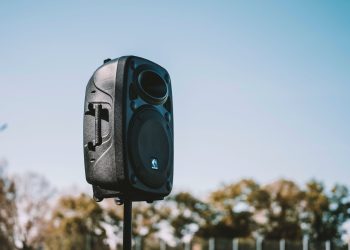The trumpet is a brass instrument with a rich and vibrant sound that has been a staple of orchestral and jazz music for centuries. Whether you’re a beginner or an experienced player, choosing the right trumpet can be a challenging task with so many options available in the market. That’s why we’ve put together this comprehensive guide to the top 10 best trumpets on the market today. This article will help you choose the best trumpet based on your skill level, budget, and musical style. From classic Yamaha models to more budget-friendly options, we’ve got you covered. Whether you’re a classical player or a jazz musician, this guide will help you find the trumpet that fits your needs. With a wealth of information, including detailed product descriptions, pros, and cons, you’ll be able to make an informed decision and choose the perfect trumpet for your needs.
The Mendini by Cecilio Bb Trumpet is a great choice for beginner musicians. It features a copper lead mouthpiece, comfortable mother-of-pearl keys, and smooth action valves that produce a crisp and high-quality sound. The trumpet has a brass body with a 5 inch bell and .460 inch bore, and comes in a variety of vibrant lacquered finishes. The package includes a hard shell case, silver plated 7C mouthpiece, and accessories such as a polishing cloth, white gloves, and valve oil. With its elegant design and excellent sound quality, this beginner trumpet is the perfect start to a jazz band.
2. Eastar Bb Standard Trumpet Set
The Eastar Bb Standard Trumpet Set is a reliable and beautiful instrument for beginner and student musicians. It features a unique valve system for durable performance, and a high-quality brass and cupronickel pipe for excellent sound and playability. The trumpet has a stunning lacquer plating and comes with everything needed, including a 7C mouthpiece, white gloves, cleaning suit, hard case, and a 12-month product warranty. Whether you're starting out or looking for a gift, the Eastar Bb Trumpet is a great choice for its amazing timbre and beautiful appearance.
3. Jean Paul USA TR-330 Standard Student Trumpet
The Jean Paul USA TR-330 Standard Student Trumpet is a high-quality instrument for beginner musicians. It features a beautiful yellow brass body with a gold lacquer finish and is in the key of Bb. The trumpet is easy to transport with its included robust contoured carrying case. The package also includes essential accessories such as valve oil, gloves, a cleaning cloth, and a mouthpiece. With its excellent construction and accessories, the Jean Paul USA TR-330 is a great choice for beginner trumpet players.
4. Glory Brass Bb Trumpet with Pro Case
The Glory Brass Bb Trumpet with Pro Case is a solid brass instrument that is both high-quality and cost-effective. It comes with a silver-plated 7C mouthpiece and includes a light-weight hard case, bottle of valve oil, soft polishing cloth, and a pair of white gloves. This trumpet has been approved and recommended by teachers, making it a great choice for both beginner and student musicians. Whether you're looking to buy a trumpet for yourself or as a gift, the Glory Brass Bb Trumpet with Pro Case is a product of choice.
5. Jean Paul USA Trumpet – Standard, Brass (TR-430)
The Jean Paul USA Trumpet (TR-430) is an intermediate trumpet in the key of Bb with a rose brass lead pipe. It features an adjustable third trigger for a comfortable hand position and proper playing technique. The highly durable piston valve maximizes sound quality and extends the life of the instrument. The trumpet also comes with a beautiful and sturdy carrying case for easy and safe transportation. Whether you're an advancing student or an amateur player, the Jean Paul USA Trumpet (TR-430) is a great choice for a high-quality and reliable instrument.
6. EASTROCK Bb Trumpet Nickel Engraved
The EASTROCK Bb Trumpet is a nickel-engraved instrument that boasts a solid and durable body. It has an 11.65mm/0.460inch pipe and a 125mm/4.92inch bell mouth, with a valve system that is both quick-rebounding and air-tight. The trumpet has a beautiful design and smooth action valves, and comes with a hard case with backpack straps and a zipper pocket, a pair of white gloves, a soft polishing cloth, and a silver-plated 7C mouthpiece. The manufacturer offers a no-hassle warranty, providing parts for free if the instrument ever fails due to manufacturing defects.
7. Bb Standard Trumpet Brass Silver
The Bb Standard Trumpet Brass Silver by Vangoa features an advanced integrated tube design that provides a brighter tone. It has a 123mm caliber big horn design, adjustable 1st and 3rd valve slides, and a highly polished tuning tube for a delicate appearance. The trumpet is made of silver wire, is toxic-free, and environmentally friendly. The precision piston is processed by CNC machine tools and made of stainless steel for flexible sliding and long service life. Additionally, the trumpet has a unique double waterkey design for smooth and durable playing and convenient cleaning. Ideal for beginners and students.
8. JUUXAAN Brass Standard Bb Trumpet Instrument
The JUUXAAN Brass Standard Bb Trumpet is a high-quality instrument designed for use in symphony, military, and jazz orchestras. The trumpet features a H68 brass tube body and an electrophoretic paint process that ensures a uniform and thin coating, which is both corrosion resistant and not prone to cracking. This trumpet comes with a 7C mouthpiece, valve oil, white gloves, a kit, and a hard case. JUUXAAN offers a one-month unconditional return and replace policy and a one-year warranty. The trumpet is made with precision and attention to detail, providing a strong, sharp, and brilliant timbre that is both loud and clear.
9. Yasisid Bb Standard Trumpet Set
The Yasisid Bb Standard Trumpet Set is a great choice for beginner adults or students. Its sound is loud, crisp, and high-pitched, making it ideal for various musical genres. The trumpet features a solid brass body, electrophoretic paint, durable dual waterproof valves, responsive stainless steel piston, and a fast spring rebound. The trumpet also boasts an elegant design, with a 123mm bell mouth diameter, 11.65mm pipe diameter, and a 1.355 meter pipe length. The package includes the trumpet, a hard case, 7C mouthpiece, gloves, cleaning cloth, cleaning brushes, and a backpack bag.
10. Yamaha YTR-2330 Standard Bb Trumpet
The Yamaha YTR-2330 Standard Bb Trumpet is an excellent instrument for both beginner and professional musicians. It has a yellow brass bell which delivers a rich, warm tone that is perfect for a variety of musical styles. This trumpet is designed for ease of playing with new pistons, piston caps and buttons that ensure a responsive and smooth performance. The Yamaha YTR-2330 is a reliable instrument that is built to last and will provide you with years of musical enjoyment. Whether you are a beginner looking for your first trumpet or a professional looking for an instrument that can handle demanding performance, the Yamaha YTR-2330 is a great choice.
Frequently Asked Questions
[faq-schema id=”127491″]
Trumpet Selection Tips
Trumpets are an important part of music and are used in many genres, including classical, jazz, brass bands, and even popular music. They come in different shapes, sizes, and designs, which makes choosing the right trumpet an important decision. With so many options, it can be difficult to know where to start. Here are some tips to help you choose the best trumpet for your needs.
Determine your skill level: The first step in choosing a trumpet is to assess your skill level. If you’re a beginner, it’s important to select a trumpet that is easy to play and produces a good sound. As you progress and become more skilled, you can upgrade to a higher-end trumpet that provides better sound quality and more options for customization.
Consider your budget: Trumpets come in a wide range of prices, and it’s important to choose one that fits your budget. Beginner trumpets can be purchased for as little as $300, while professional-level trumpets can cost several thousand dollars. If you’re just starting out, it’s best to invest in a beginner trumpet that provides good sound quality and ease of playability, rather than a cheap instrument that may not provide the best playing experience.
Think about the type of music you play: Different types of music require different types of trumpets. For example, classical music typically requires a trumpet with a more focused and defined sound, while jazz music calls for a trumpet with a more open and versatile sound. If you’re unsure of the type of trumpet that’s best for you, consider speaking with a music teacher or professional trumpet player.
Check the trumpet’s construction: The construction of a trumpet is an important factor in its sound quality and ease of playability. Look for a trumpet that is made of high-quality materials, such as brass or nickel. The weight of the trumpet is also important, as heavier trumpets can be more difficult to play for extended periods of time.
Consider the size of the trumpet: Trumpets come in different sizes, with different bore and bell diameters. The size of the trumpet can affect its sound quality and ease of playability, so it’s important to choose one that is the right size for you. If you’re not sure, consider trying several trumpets of different sizes to see which one feels most comfortable.
Evaluate the sound quality: The sound quality of a trumpet is one of the most important factors to consider. The sound should be clear, focused, and resonant. It’s also important to look for a trumpet that produces a consistent sound across different notes and registers.
Try before you buy: Finally, it’s important to try the trumpet before you buy it. This will give you a chance to assess the sound quality, ease of playability, and overall feel of the instrument. If possible, try several trumpets to see which one feels and sounds the best for you.
Types of Trumpets
Trumpets are versatile and widely used brass instruments that come in various shapes, sizes, and designs. They have been around for centuries and have played a significant role in music history. With so many options, it can be difficult to know which type of trumpet is best for your needs. Here is a guide to the different types of trumpets available today.
Standard Trumpet: The standard trumpet is the most common type of trumpet and is used in a wide variety of musical styles. It has a cylindrical shape and produces a bright, focused sound that is ideal for classical and jazz music. Standard trumpets typically have three valves, which allow the player to adjust the pitch and tone of the instrument.
Cornet: The cornet is similar to a standard trumpet, but it has a conical shape that flares out at the bell. This design results in a more mellow and rounded sound compared to the brighter and sharper sound of a standard trumpet. Cornets are commonly used in brass band music and are often favored by musicians who prefer a more traditional sound.
Flugelhorn: The flugelhorn is a type of trumpet that has a larger bell and produces a warm, rich sound. It is often used in jazz and brass band music, and its sound is ideal for playing ballads and slow melodies. The flugelhorn is typically played with a larger mouthpiece than a standard trumpet, which contributes to its distinct sound.
Piccolo Trumpet: The piccolo trumpet is a small trumpet that is pitched one octave higher than a standard trumpet. It has a smaller bore and bell, which gives it a bright, piercing sound. Piccolo trumpets are often used in classical music, especially in orchestras and chamber music groups.
Pocket Trumpet: The pocket trumpet is a compact trumpet that is ideal for musicians who need to travel with their instrument. It has a smaller size and weight, making it easy to carry and store, while still producing a quality sound. Pocket trumpets are often used by musicians who play in small groups or need an instrument that is easy to transport.
Bach Trumpet: The Bach trumpet is a high-end trumpet that is favored by professional musicians. It is designed for maximum sound quality and versatility, and it is known for its rich, warm sound. Bach trumpets are often used in classical and jazz music and are favored by musicians who need a trumpet that can produce a wide range of tones and sounds.
Trumpet in B-flat: The trumpet in B-flat is a standard trumpet that is pitched in the key of B-flat. It is commonly used in classical and jazz music and is favored by musicians who prefer the bright, focused sound that this type of trumpet produces.
Trumpet Brands
The trumpet is one of the most widely recognized and popular instruments in the world, and is used in a variety of musical genres, from classical to jazz and beyond. As such, there are numerous trumpet brands available on the market, each offering their own unique take on this versatile instrument. In this article, we will take a look at some of the most popular trumpet brands, and what sets each of them apart.
Bach Stradivarius
Bach Stradivarius is a brand that has been synonymous with high-quality trumpets for over a century. These trumpets are known for their rich, warm sound and excellent projection, making them a popular choice among professional musicians. They are also highly versatile, and are suitable for use in a wide range of musical styles, from classical to jazz.
One of the key features of Bach Stradivarius trumpets is their hand-crafted construction, which allows for a level of precision and attention to detail that is simply not possible with mass-produced instruments. Each trumpet is made using high-quality materials and is individually inspected and tested to ensure that it meets the highest standards of quality and playability.
Another important factor that sets Bach Stradivarius apart from other brands is its rich history and legacy. The company was founded by Vincent Bach in 1918, and has since become one of the most respected and revered trumpet brands in the world. With a long-standing reputation for quality and craftsmanship, Bach Stradivarius is a name that is trusted and respected by musicians of all levels, from beginners to seasoned professionals.
Yamaha
Yamaha is a brand that is well-known for its wide range of high-quality musical instruments, including trumpets. These instruments are designed to be both highly playable and durable, making them an excellent choice for musicians of all levels. Yamaha trumpets are also known for their bright, punchy sound, which makes them well-suited for use in a variety of musical genres, from classical to rock and pop.
One of the key advantages of Yamaha trumpets is their affordability. Unlike some of the more high-end brands, Yamaha trumpets are priced in such a way that they are accessible to musicians of all budgets. This has made Yamaha one of the most popular trumpet brands in the world, and has helped to make the instrument more accessible to musicians everywhere.
Another important factor that sets Yamaha apart from other brands is its focus on innovation. The company is constantly working to develop new technologies and techniques that can improve the performance and playability of its instruments. Whether it’s through the use of new materials, new construction methods, or advanced manufacturing techniques, Yamaha is always at the forefront of the industry when it comes to developing high-quality trumpets.
Getzen
Getzen is a brand that has been producing high-quality trumpets for over 70 years. These instruments are known for their rich, warm sound and excellent projection, making them a popular choice among professional musicians. Getzen trumpets are also known for their exceptional build quality and attention to detail, which sets them apart from other brands in the market.
One of the key factors that sets Getzen apart from other brands is its commitment to innovation. The company is constantly working to develop new technologies and techniques that can improve the performance and playability of its instruments. Whether it’s through the use of new materials, new construction methods, or advanced manufacturing techniques, Getzen is always looking for ways to take its trumpets to the next level.
Parts of a Trumpet
The trumpet is a brass instrument that has been used for centuries in a wide range of musical genres, from classical to jazz and beyond. Whether you’re a seasoned professional or just starting out, it’s important to understand the various parts of the trumpet and how they work together to produce the instrument’s distinctive sound. In this article, we will take a look at the main components of the trumpet, and what each of them does.
Bell
The bell is the flared end of the trumpet, and is responsible for shaping and directing the sound of the instrument. It is typically made from brass and is one of the most recognizable parts of the trumpet. The size and shape of the bell will affect the tone and volume of the instrument, with larger bells typically producing a more resonant, full-bodied sound.
Mouthpiece
The mouthpiece is the small, cup-shaped part of the trumpet that the player blows into to produce sound. It is typically made from brass or other materials, and is available in a variety of sizes and shapes to suit different playing styles and preferences. The mouthpiece is a critical component of the trumpet, as it determines the resistance and overall sound quality of the instrument.
Leadpipe
The leadpipe is the section of the trumpet that connects the mouthpiece to the rest of the instrument. It is responsible for helping to shape the sound of the instrument and for providing stability to the mouthpiece. The leadpipe is typically made from brass and is carefully crafted to ensure that it provides a smooth, consistent flow of air to the instrument.
Valves
The valves are the mechanism that allows the player to change the pitch of the trumpet. They are typically made from brass or other materials, and are located near the bottom of the instrument. When the player presses down on a valve, it opens up a series of ports that allow air to flow through the instrument, changing the length of the trumpet and altering the pitch of the sound produced.
Slides
The slides are the long, cylindrical parts of the trumpet that are used to fine-tune the instrument’s pitch. They are typically made from brass and are located near the bottom of the instrument. By moving the slides in or out, the player can adjust the overall length of the trumpet, altering the pitch of the sound produced.
Braces
The braces are the small pieces of metal that help to hold the various parts of the trumpet together and ensure that the instrument is stable and secure. They are typically made from brass or other materials, and are carefully positioned to ensure that the trumpet is balanced and well-supported.
Tuning Slide
The tuning slide is a section of the trumpet that allows the player to fine-tune the overall pitch of the instrument. It is typically made from brass and is located near the bottom of the instrument. By moving the tuning slide in or out, the player can adjust the length of the trumpet, altering the overall pitch of the sound produced.
How to Clean a Trumpet
As a musician, taking care of your trumpet is an essential part of maintaining its performance and longevity. Regular cleaning not only helps to keep your trumpet looking its best, but also helps to prevent the buildup of dirt, oil, and other contaminants that can negatively impact its sound quality. In this article, we will provide a step-by-step guide on how to clean your trumpet, so that you can keep your instrument in top condition for years to come.
Step 1: Disassemble the Trumpet
Before you start cleaning your trumpet, it’s important to disassemble it into its individual components. This will allow you to clean each part of the instrument thoroughly, and to remove any dirt or grime that has accumulated over time. To disassemble the trumpet, start by removing the mouthpiece and then unscrewing the leadpipe from the rest of the instrument. Next, remove the valves and slides, and carefully place each component in a clean, safe place where it won’t get damaged or lost.
Step 2: Clean the Mouthpiece
The mouthpiece is one of the most important parts of the trumpet, and it is essential to keep it clean and free from dirt and oils that can accumulate from your lips. To clean the mouthpiece, start by using a soft, damp cloth to gently wipe down the surface. Avoid using too much water, as this can damage the mouthpiece over time. If necessary, you can use a small amount of mild soap to help remove any stubborn grime or buildup. Rinse the mouthpiece thoroughly with warm water and then dry it with a soft cloth.
Step 3: Clean the Leadpipe and Valves
The leadpipe and valves are two of the most important parts of the trumpet, and it is important to keep them free from dirt and oils that can affect their performance. To clean these components, start by using a soft, damp cloth to wipe down the surface. If necessary, you can use a small amount of mild soap to help remove any stubborn grime or buildup. Once you’ve cleaned these parts, rinse them thoroughly with warm water and then dry them with a soft cloth.
Step 4: Clean the Slides
The slides are another important part of the trumpet, and they are often prone to accumulating dirt and oils that can affect their performance. To clean the slides, start by using a soft, damp cloth to wipe down the surface. If necessary, you can use a small amount of mild soap to help remove any stubborn grime or buildup. Once you’ve cleaned the slides, rinse them thoroughly with warm water and then dry them with a soft cloth.
Step 5: Clean the Bell
The bell is one of the most visible parts of the trumpet, and it is important to keep it clean and free from scratches and dents that can affect its appearance. To clean the bell, start by using a soft, damp cloth to wipe down the surface. If necessary, you can use a small amount of mild soap to help remove any stubborn grime or buildup. Once you’ve cleaned the bell, rinse it thoroughly with warm water and then dry it with a soft cloth.
Step 6: Reassemble the Trumpet
Once you’ve cleaned all of the individual parts of the trumpet, it’s time to reassemble the instrument. Start by putting the slides back in place, and then reattach the leadpipe and valves. Finally, reattach the mouthpiece and check that the trumpet is playing properly. If you notice any issues, such as leaks or irregular sounds, take the trumpet to a professional for repairs.
How to Learn to Play the Trumpet (Step by Step)
The trumpet is a beautiful and versatile instrument that can be played in a variety of musical styles, from classical to jazz. If you’re interested in learning to play the trumpet, it’s important to start with the basics and build your skills gradually over time. In this article, we’ll provide a step-by-step guide to help you learn how to play the trumpet, so that you can become a skilled musician in no time.
Step 1: Get a Good Instrument
The first step in learning to play the trumpet is to get a good instrument. Investing in a quality trumpet is important, as it will help you develop good habits and technique from the start. Look for a trumpet that feels comfortable to hold and play, and that has a sound that you like. You can either purchase a new trumpet or rent one from a music store.
Step 2: Learn the Basics of Breathing
The foundation of playing the trumpet is proper breathing. To start, sit up straight and breathe in deeply through your nose, filling your lungs completely. Exhale slowly through your mouth, making sure to release all of the air from your lungs. Practice this technique until you can breathe in and out smoothly and easily.
Step 3: Learn the Basic Fingerings
Once you’ve learned the basics of breathing, it’s time to start learning the basic fingerings for the trumpet. This will involve placing your fingers on the valves in various combinations to produce different notes. Start with simple fingerings, such as playing a scale or a simple melody. As you become more comfortable with the fingerings, gradually work your way up to more complex patterns.
Step 4: Start Practicing Daily
Consistent practice is key to becoming a skilled trumpet player. Set aside time each day to practice, even if it’s just for a few minutes. As you practice, focus on using proper breathing techniques and fingerings. Over time, your skills will improve and you’ll start to notice a difference in your sound and control.
Step 5: Listen to Music and Study Trumpet Technique
To become a great trumpet player, you need to understand the basics of trumpet technique and the music that is typically played on the instrument. Listen to recordings of professional trumpet players and study their technique. Pay attention to their sound, phrasing, and rhythm. This will give you a better understanding of what is possible on the trumpet and help you develop your own style.
Step 6: Take Lessons or Join a Band
Taking lessons or joining a band is a great way to get additional support and guidance as you learn to play the trumpet. Lessons can help you to identify areas that need improvement and to receive feedback on your technique. Joining a band will give you the opportunity to play with others and to perform in public, which can be a great motivator and help you to develop your skills.
Step 7: Practice, Practice, Practice
The most important thing you can do to learn how to play the trumpet is to practice. The more you practice, the better you will get. Set achievable goals for yourself and work towards them every day. Remember, playing the trumpet is a skill that takes time and patience to develop, but with hard work and dedication, you will be able to play beautiful music in no time.
History of the Trumpet
The trumpet is a musical instrument that has a rich and fascinating history, dating back thousands of years. The trumpet has been used for religious ceremonies, military signals, and entertainment, and has been a staple of classical and popular music for centuries. In this article, we’ll take a look at the history of the trumpet and how it has evolved over time.
Early History
The earliest trumpets were made of animal horns, such as those from a ram or a buffalo, and were used for signaling in various cultures around the world, including in ancient Egypt and in the Middle East. These early trumpets were simple instruments, consisting of a single tube with a flared end that was used to produce a loud and distinct sound.
Medieval Trumpets
During the medieval period, the trumpet evolved into a more sophisticated instrument. The trumpet was still used primarily for signaling, but it was also used in religious and secular music. Trumpets were made of brass, which allowed for greater precision in tuning and allowed musicians to play a wider range of notes. The design of the trumpet was also improved, with the addition of finger holes and valves, which allowed for greater control over the instrument.
Baroque Trumpets
In the Baroque period, the trumpet became a staple of classical music. During this time, composers such as Handel and Bach wrote music for the trumpet, which was played in orchestras and courtly settings. The trumpet was considered to be a powerful and elegant instrument, and it was often used to evoke grandeur and majesty.
Classical Trumpets
In the classical period, the trumpet continued to evolve and was used in a wide range of musical styles. During this time, trumpets were made with a wider bore and a more cylindrical shape, which allowed for a brighter and more focused sound. Trumpet virtuosos, such as Joseph Haydn, Anton Weidinger, and Johann Nepomuk Hummel, wrote solo pieces for the trumpet, showcasing its versatility and musicality.
Jazz Trumpets
In the 20th century, the trumpet became an essential part of jazz music. Jazz musicians, such as Louis Armstrong, Bix Beiderbecke, and Dizzy Gillespie, revolutionized the way the trumpet was played, using techniques such as bending notes, growling, and using mutes to create a unique sound. Jazz trumpet playing became a distinct style, with its own techniques, phrasing, and musical vocabulary.
Modern Trumpets
Today, the trumpet is a versatile and widely used instrument, with a rich history and tradition. Trumpets are made with a variety of materials and finishes, and come in many different shapes and sizes. Trumpet players continue to push the boundaries of the instrument, experimenting with new techniques and styles.
Since 2005, Singersroom has been the voice of R&B around the world. Connect with us via social media below.
